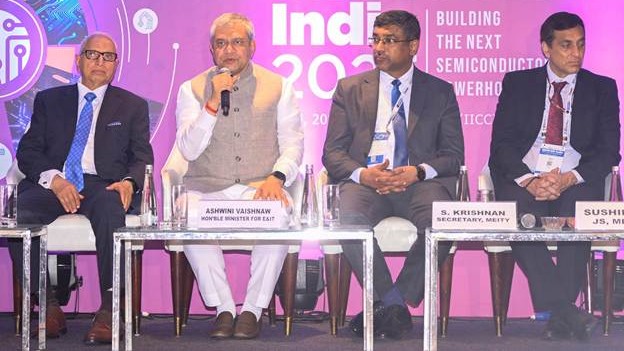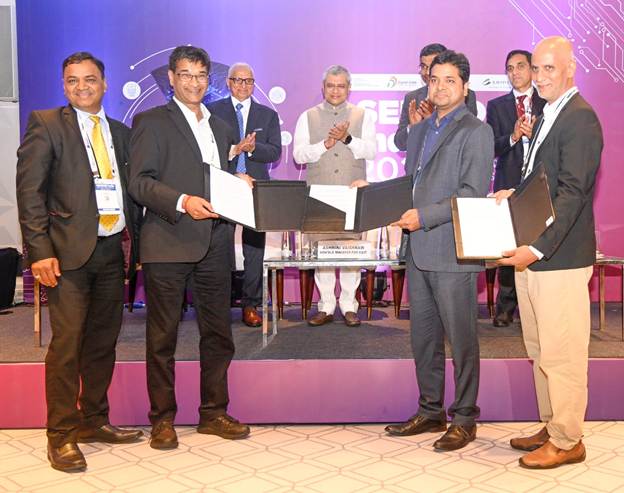
India’s semiconductor journey reached a landmark today as Prime Minister Shri Narendra Modi was presented with the first set of Made-in-India chips by Union Minister of Electronics and Information Technology Shri Ashwini Vaishnaw. Marking a new chapter in the India Semiconductor Mission (ISM), the Minister described it as a “moment of pride,” thanking the Prime Minister for his farsighted vision, strong will, and decisive action.
Launched in December 2021, the India Semiconductor Mission (ISM) has successfully transitioned from approvals to production in just three and a half years. Presenting the first Made-in-India chips, Union Minister Shri Ashwini Vaishnaw said that India, with its 7.8% GDP growth and a rapidly growing semiconductor ecosystem, “stands as a lighthouse of stability.”
Shri Vaishnaw underlined that India’s semiconductor mission is rooted in trust, intellectual property protection, supply chain resilience, and co-development with global partners. He noted that India has consistently approached the world as a partner in mutual growth, strengthening its trusted position in the global value chain.
At SEMICON India 2025, twelve Memorandums of Understanding (MoUs) were announced, focusing on indigenous product design and development, including camera modules, MEMS microphones, secure chips for e-passports, IoT boards, and semiconductor packaging. The agreements also emphasized talent development and academic collaboration, with institutions like IIT Madras, IISc Bangalore, and Arizona State University partnering under the ISM framework.

In a major announcement, Shri Vaishnaw launched the Deep Tech Alliance, backed by nearly $1 billion in commitments, to accelerate innovation in semiconductors, clean energy, quantum technologies, biotechnology, and space. He said this would provide critical venture capital support for deep tech startups and innovators.
The Minister also confirmed that ISM 2.0 will be rolled out after the first phase established robust fabs, OSAT units, and supply chain infrastructure. The second phase will focus on making India a “product nation”, encouraging design-led manufacturing and global exports.
Highlighting India’s competitiveness, Shri Vaishnaw said independent studies show that semiconductor production in India is already 15–30% more cost-efficient than global benchmarks. With two fabs operational and more in the pipeline, India is gaining exponential momentum in this strategic sector.
The event also showcased 20 student-designed chips developed at the Semi-Conductor Laboratory (SCL), presented to the Prime Minister. With 78 universities now using advanced EDA tools and contributing to nearly 20% of the global semiconductor workforce, Shri Vaishnaw emphasized that talent and innovation remain the heart of India’s semiconductor strategy.
SEMICON India 2025 also saw participation from leading global semiconductor companies such as ASML, Lam Research, Applied Materials, Merck, and Tokyo Electron, reflecting the strong international confidence in India’s semiconductor roadmap.
With a projected $1 trillion semiconductor industry by 2030, India is positioning itself as a global leader by combining talent, trust, and technology, fulfilling Prime Minister Shri Narendra Modi’s vision of making India a global semiconductor hub.
Source – PIB
